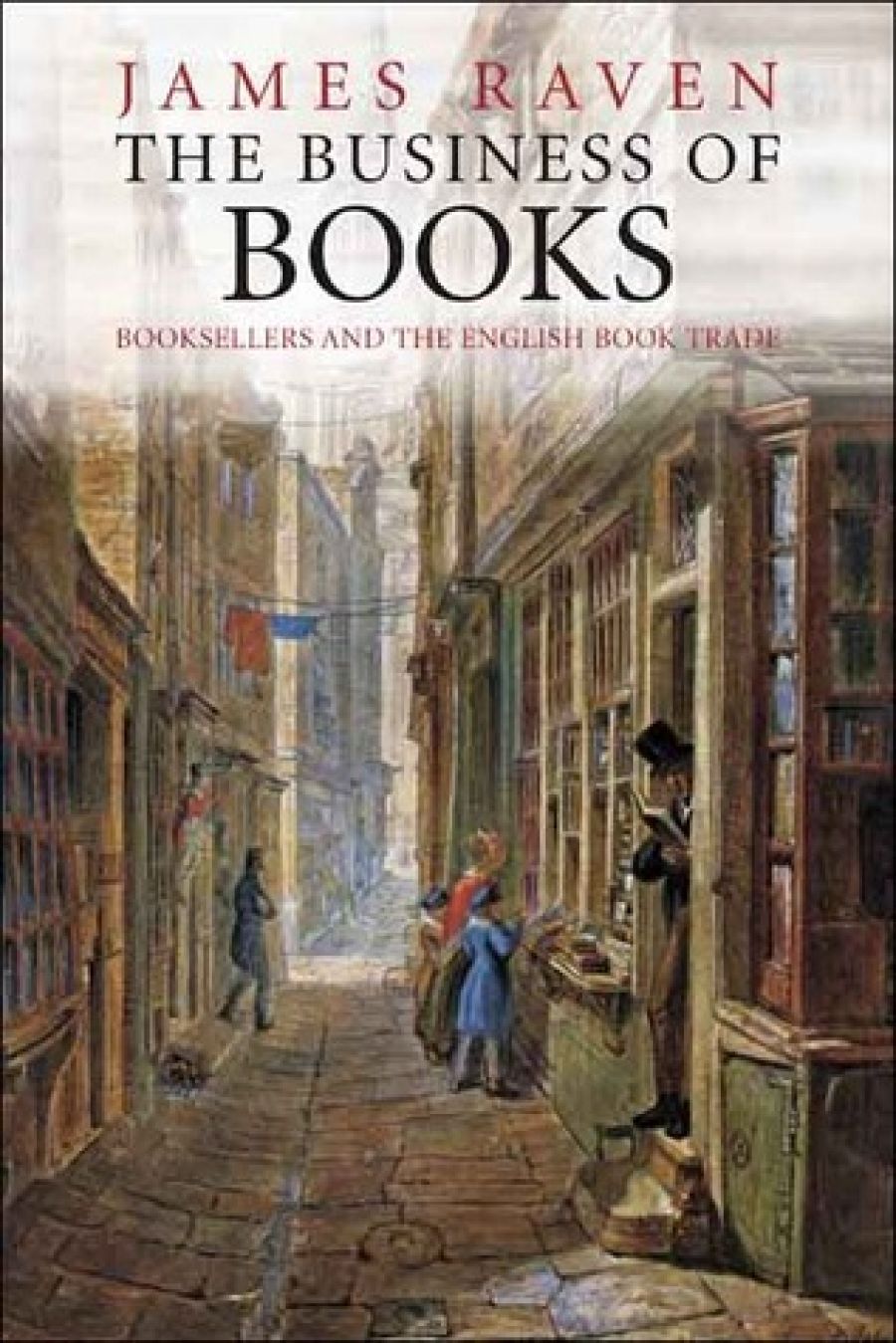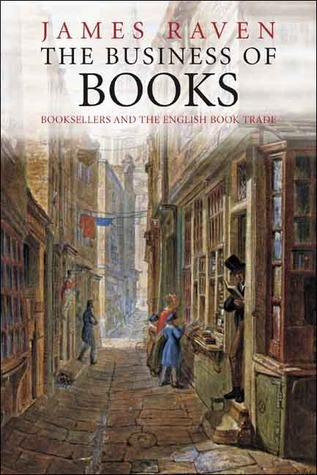
- Free Article: No
- Contents Category: History
- Review Article: Yes
- Article Title: Remaindering Jane
- Online Only: No
- Custom Highlight Text:
Who was hanged, disembowelled and quartered after printing ‘nawghtye papystycall Bookes’? William Carter. Where did English booksellers store and sell their books? For several centuries, mostly from tiny shops near St Paul’s. How tiny is tiny? Zachary and William Stewart had ten feet from their shopfront to the back of the yard. Who was the builder and owner of the Temple of the Muses, the biggest bookshop of its time? James Lackington. How did eighteenth-century booksellers use newspapers to promote their wares? Through the ‘puff’, a sensationalist pushing of a single book, and the ‘cloud’, a lengthy listing of many books. Who remaindered Jane Austen’s Emma? John Murray II. The questions, big and small, are endless, and this book provides the answers.
- Book 1 Title: The Business of Books
- Book 1 Subtitle: Booksellers and the English book trade 1450–1850
- Book 1 Biblio: Yale University Press (Inbooks), $130 hb, 448 pp
- Book 1 Cover Small (400 x 600):

- Book 1 Cover (800 x 1200):

Four centuries of one of the most vibrant book trades in the world is a large topic for anyone to take on. For an academic researcher and writer, it has been made even larger over recent years by intensive and extensive research in the academic field of the History of the Book. Despite some significant gaps in the record, a truly enormous amount of minute detail survives which has been analysed by a range of researchers and incorporated into numerous publications. (It is no accident that the notes and bibliography of this book extend to seventy-seven pages of small print.) If anyone can take on such a large topic, it is James Raven, who already has three books to his name, albeit on more chronologically limited topics. This book is packed with an extraordinary amount of detail derived from a diverse range of sources, and charts its way with great skill through a huge quantity of research.
As the subtitle suggests, Raven’s focus is on the bookseller, that multifaceted and evolving figure. The original booksellers were also printers and publishers, Caxton being an obvious example, although he was also an author and translator (not the last to combine so many roles). This book is therefore, to some extent, also a history of printing in England, as well as associated industries such as binding, engraving and papermaking. Moreover, starting before the arrival of printing in England, it charts the slow decline of handwritten books, although, even as late as the Restoration, manuscript production of such things as tracts and parliamentary speeches continued apace. Books were printed on the bookseller’s premises or nearby, and the act of publication consisted simply of putting them on sale in the bookseller–printer’s shop. Over time the roles split apart. First to separate off was the role of printer, although as late as the eighteenth century there were exceptional figures such as William Strahan, who printed numerous books but also provided publishing finance for many of them, and took his share of the profits of sales. Even in the nineteenth century, the Blackies were both printers and publishers. The separation of bookseller and publisher was a slower process, and was not entirely complete by the end of the period covered by this book. Bookselling and printing were initially concentrated around St Paul’s Cathedral, particularly in the churchyard and the narrow confines of Paternoster Row, but as London expanded booksellers moved out to other areas. It was only the destruction caused by bombing in 1941 that finally ended the intimate connection between the area around the cathedral and bookselling.
Fires were a constant danger, especially for printers because of the need to provide lighting in rooms that were often located in dark narrow alleyways. Fires could be a disaster, destroying book stock and machinery, but some victims of fires recovered well. In a similar search for light, printing presses were often placed in the upper storeys of buildings, requiring compositors to carry heavy loads of type up and down stairs, as Benjamin Franklin remembered. At street level, the booksellers sold their wares from equally small shops, lined up next to each other in a few favoured locations, until the move to larger and more isolated premises accelerated in the eighteenth century. Close cooperation with each other, often but not always enhanced by connections of marriage and descent, led to joint publication and the exchanging of books. From these practices emerged the modern booksellers who bought their books from publishers rather than confining themselves to the books they had printed.
As an academic historian, Raven is properly critical of the earlier, more impressionistic histories which have appeared over the last two centuries, and of comments from general historians such as Macaulay. He rightly points out that the official ending of perpetual copyright (in 1774) ‘has gained an importance in histories of the trade quite in excess of its true worth’, and that the introduction of steam-driven printing presses (from 1814) did not have the overnight effect that earlier histories ascribe to it, although it was ultimately a decisive event. However, in the midst of detail and academic caution, the reader may briefly wish for the more simplistic accounts with their striking storylines and entertaining heroes and villains. The vast range of the book also inhibits much dwelling on examples. Although the book contains a number of vignettes, such as that of Moses Pitt and James Lackington, it is tantalising to learn only the most basic details about other important figures. Nevertheless, a clear overall narrative emerges from the detail, and the latter is itself fascinating and comprehensive. This is an ambitious book and ultimately a successful one, even if it also reveals just how many other stories we would like to hear as well.

Comments powered by CComment